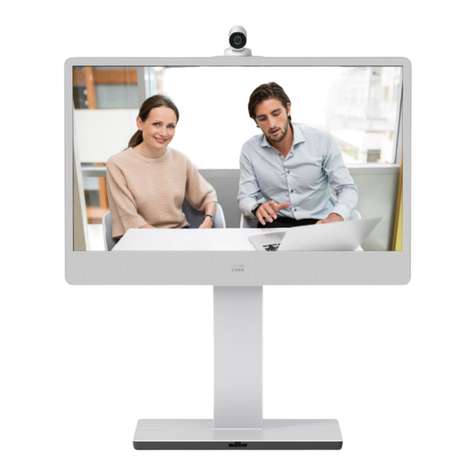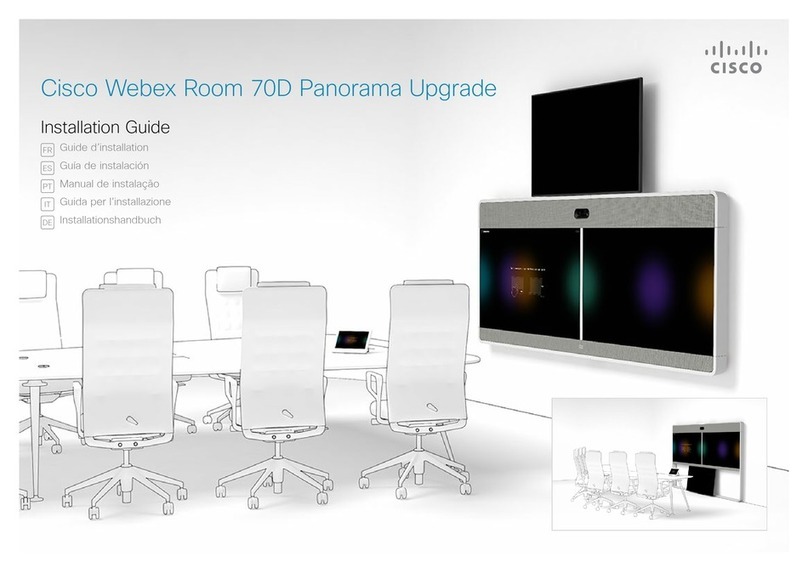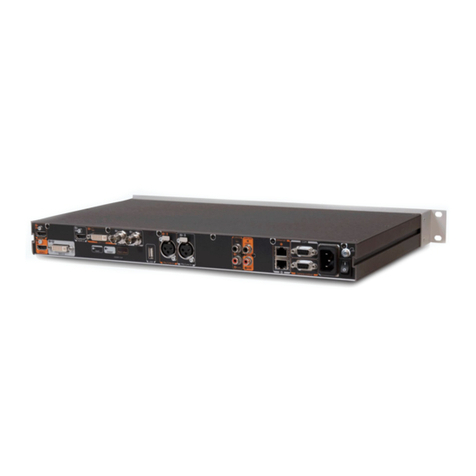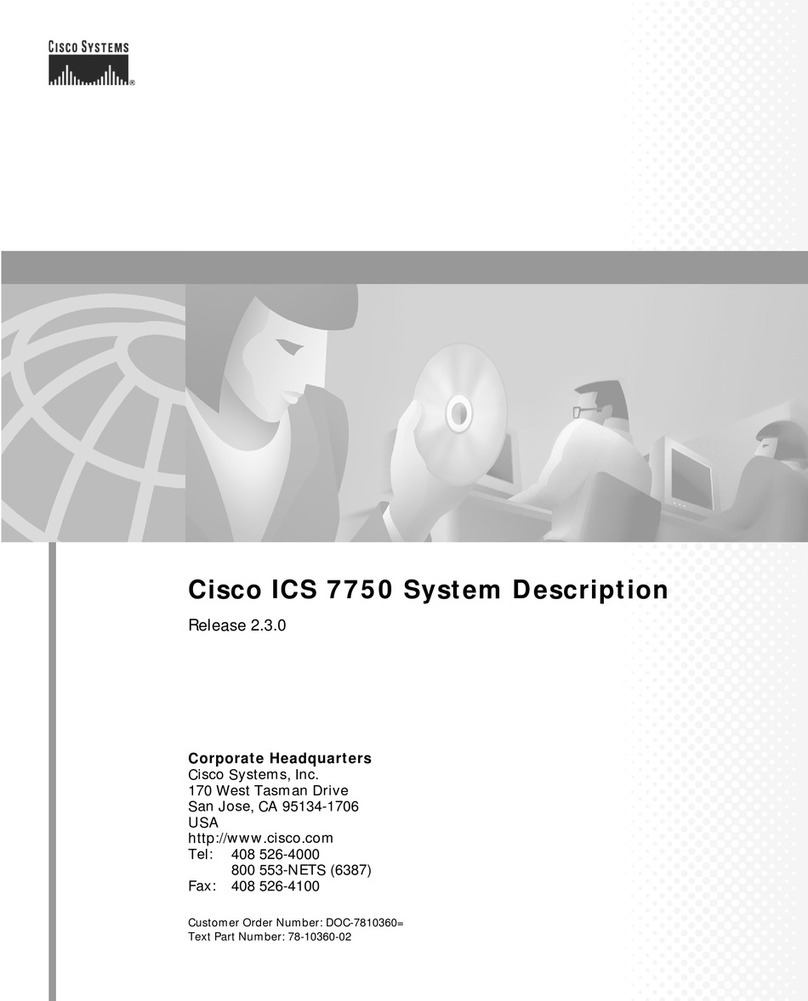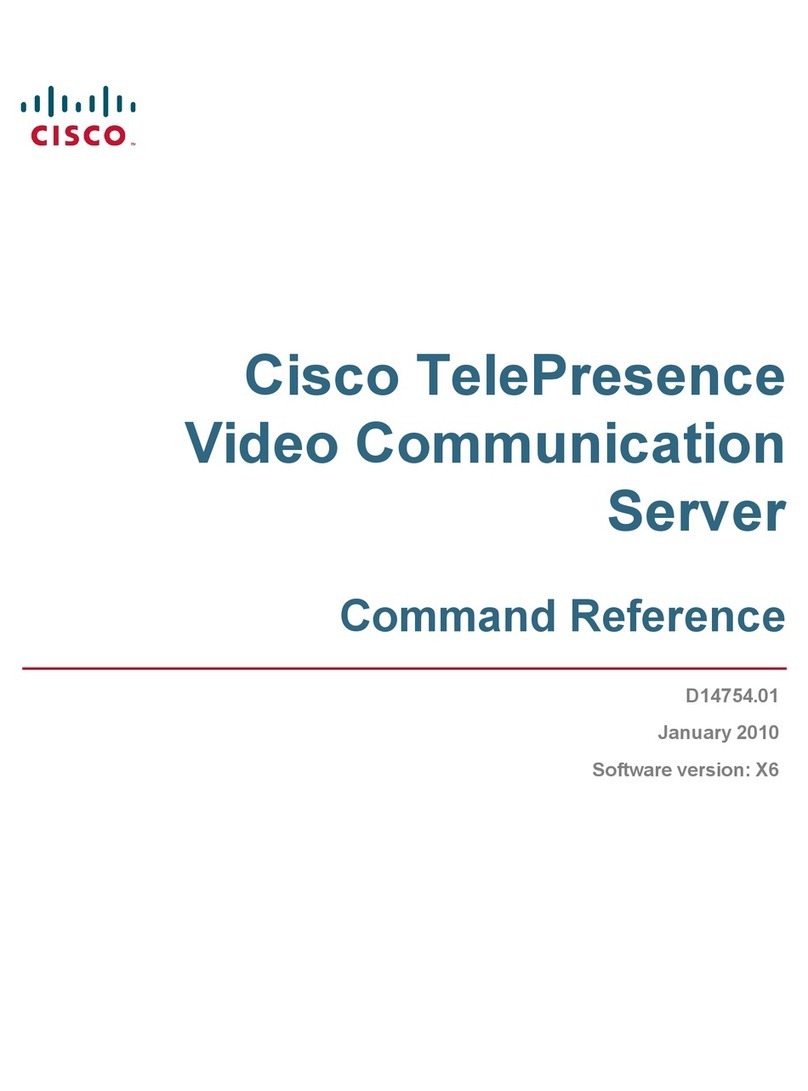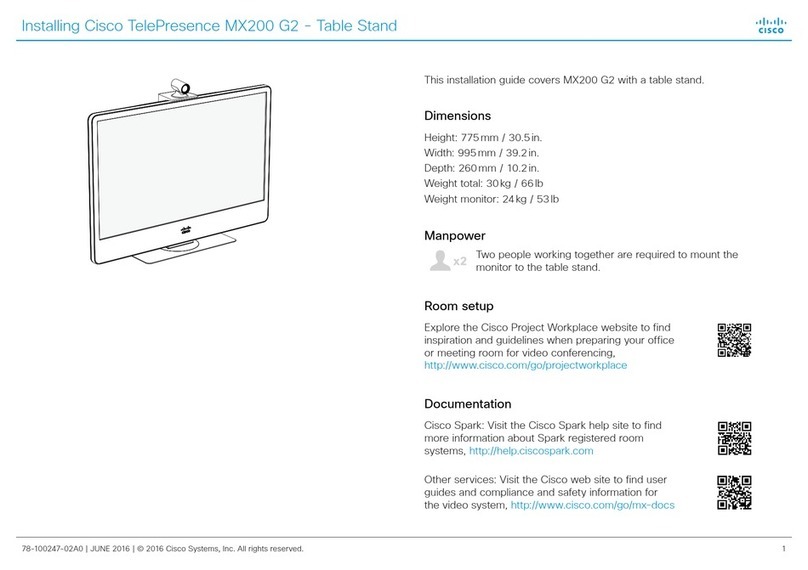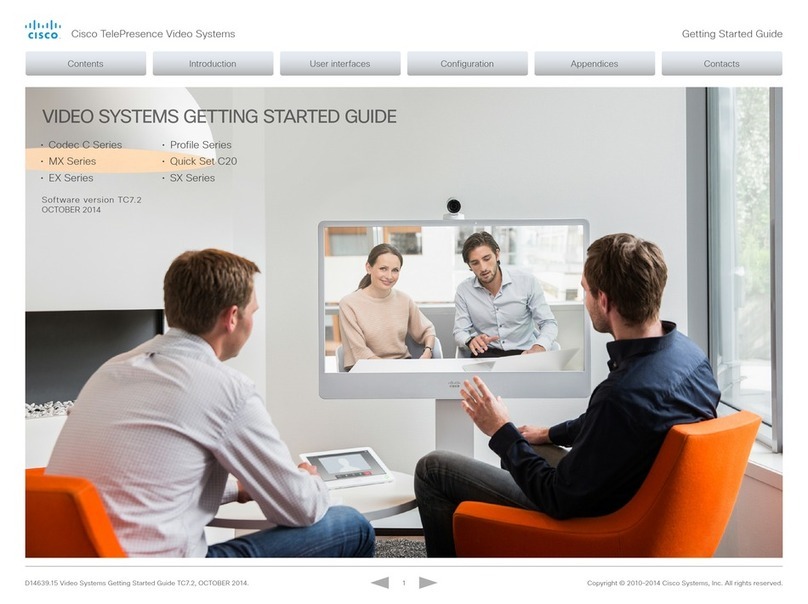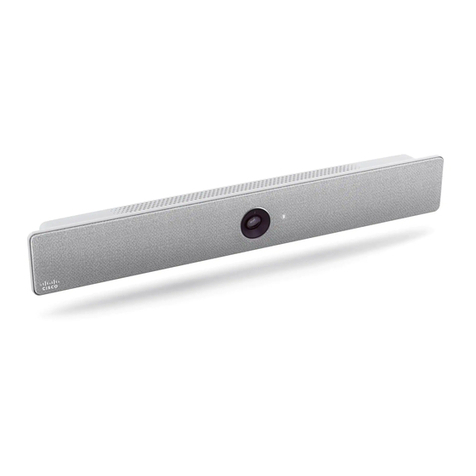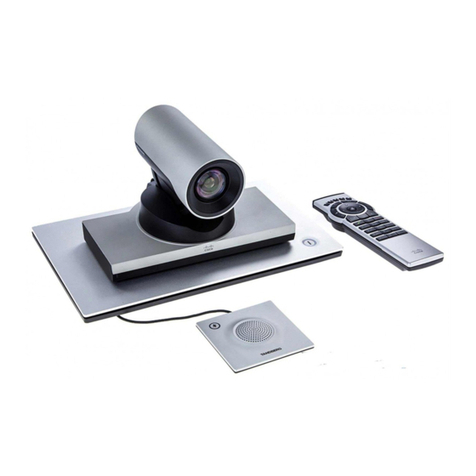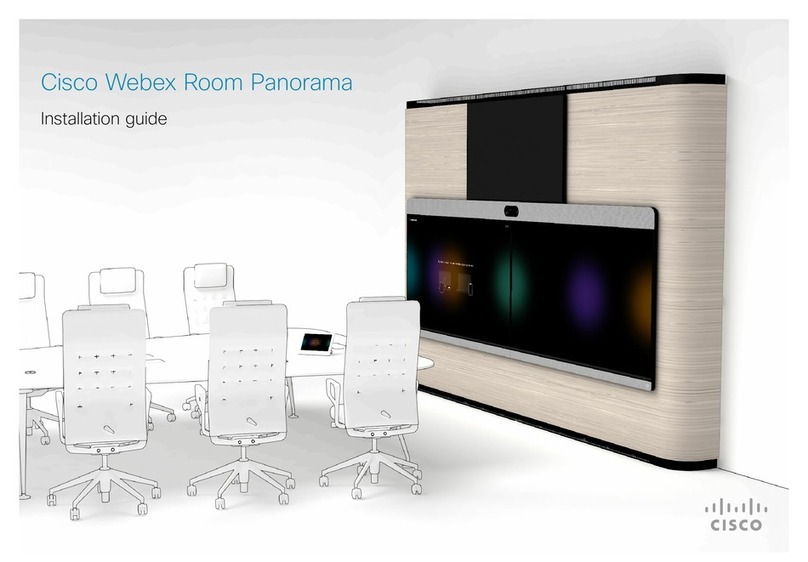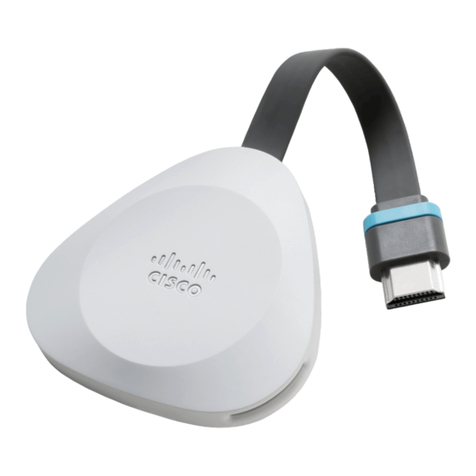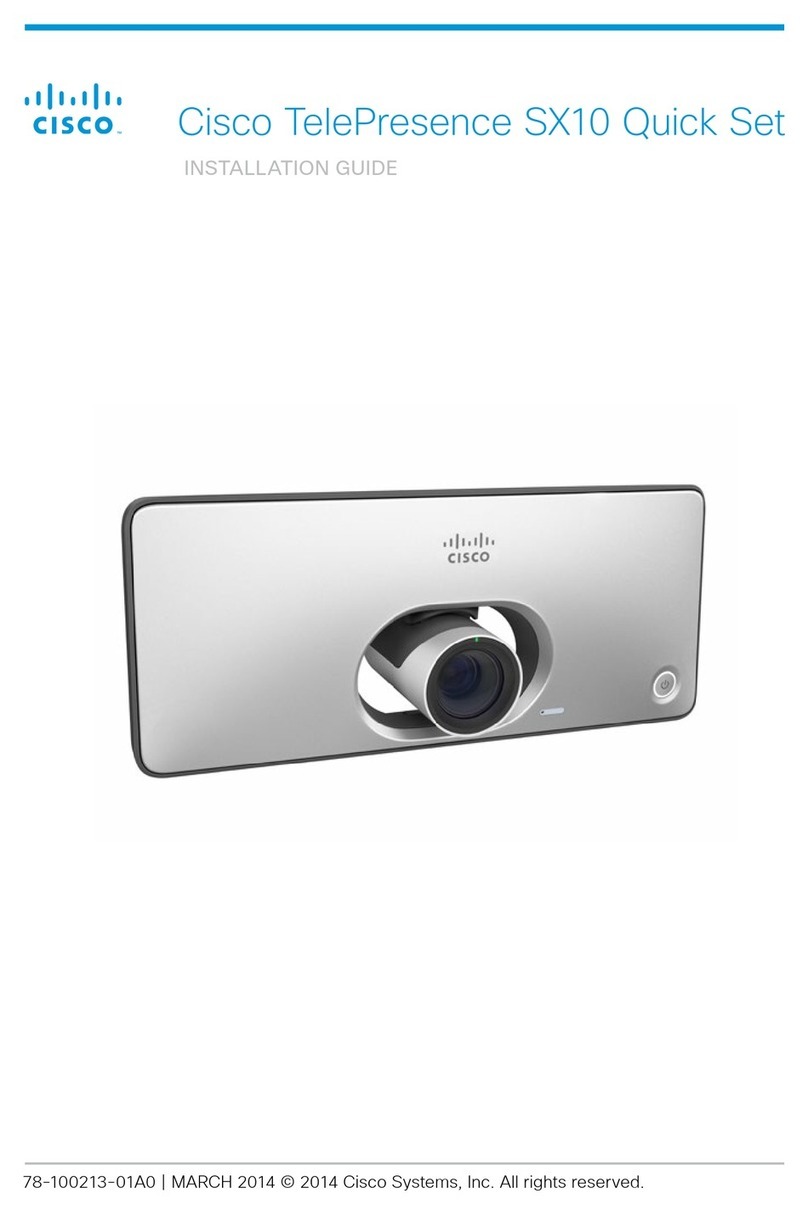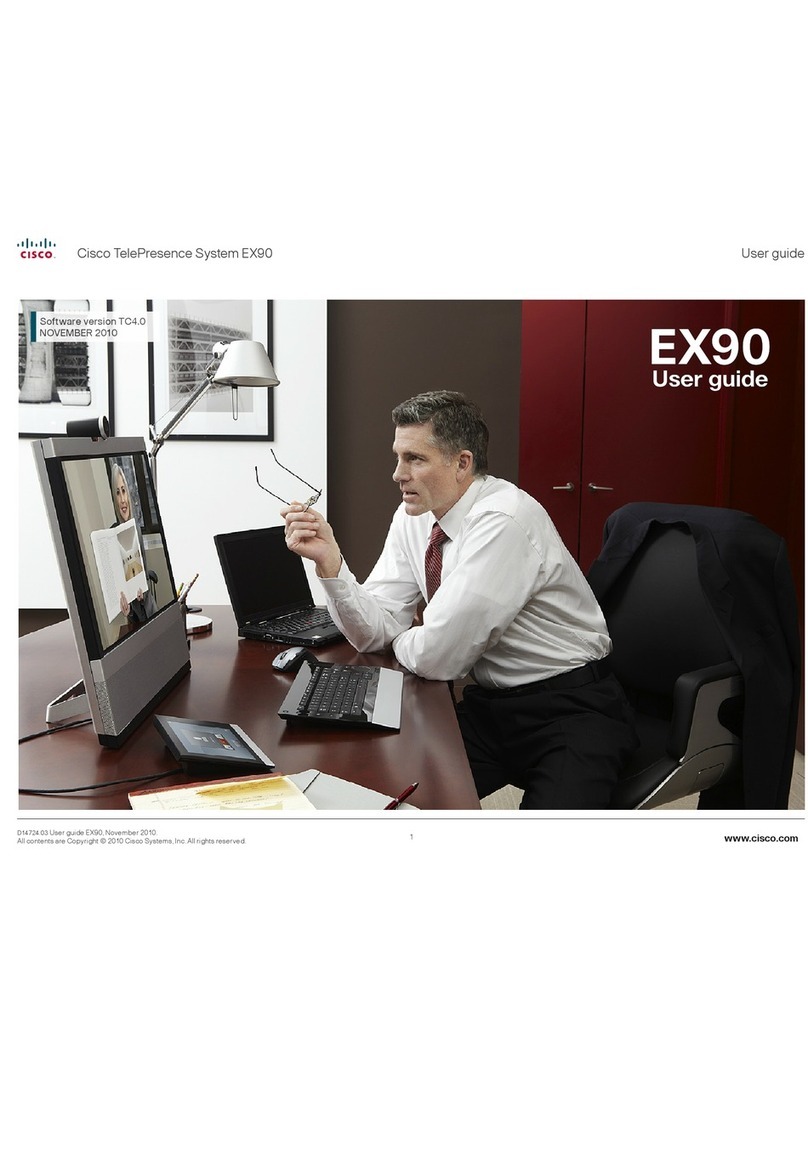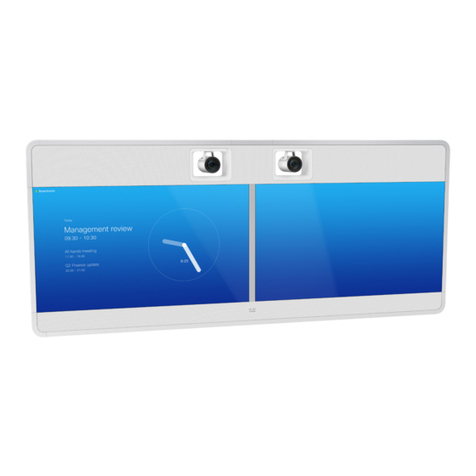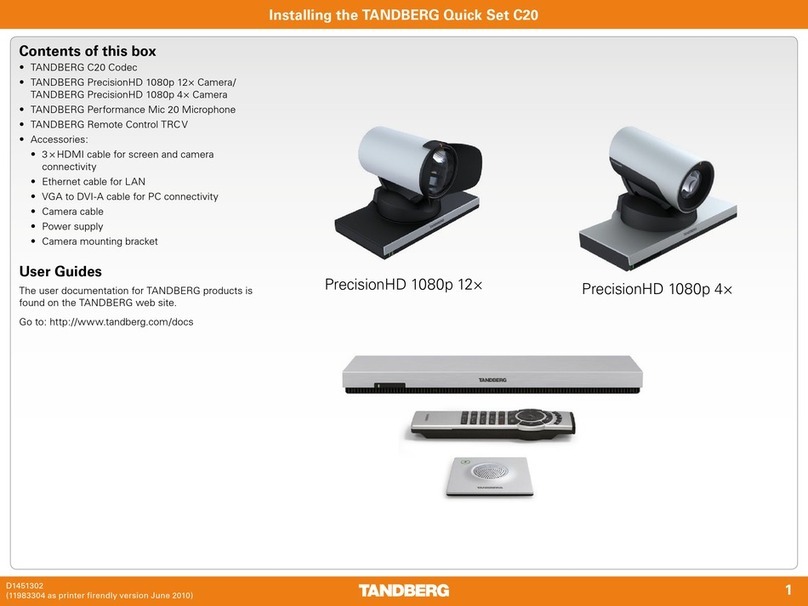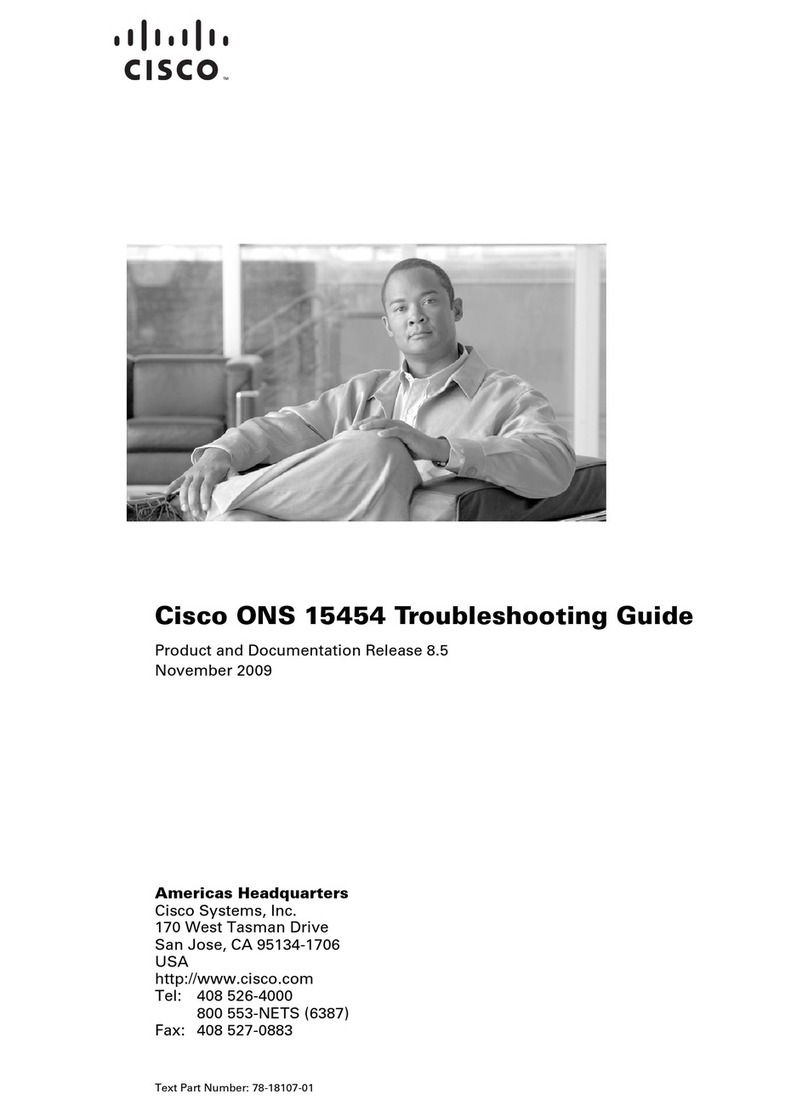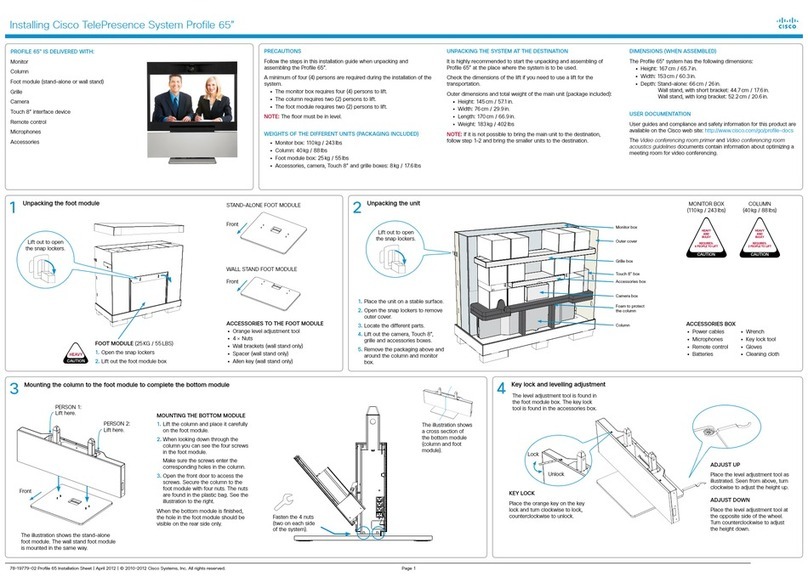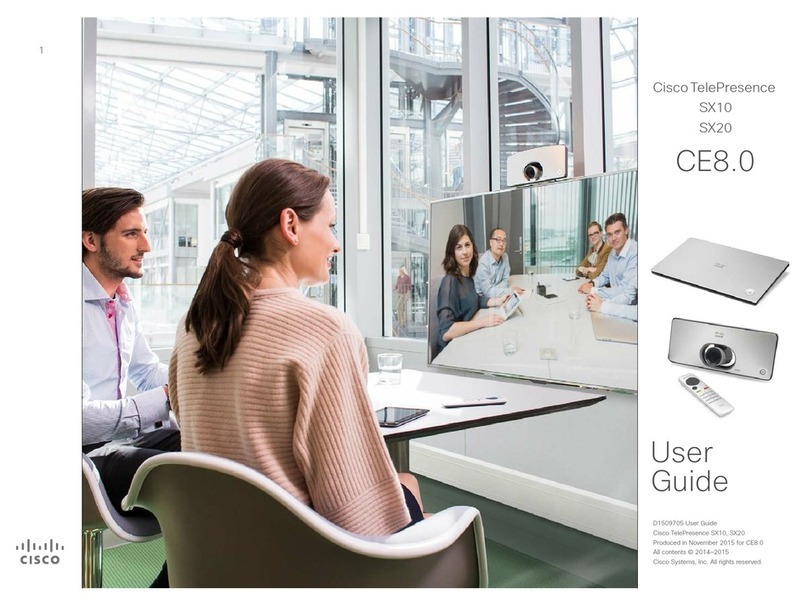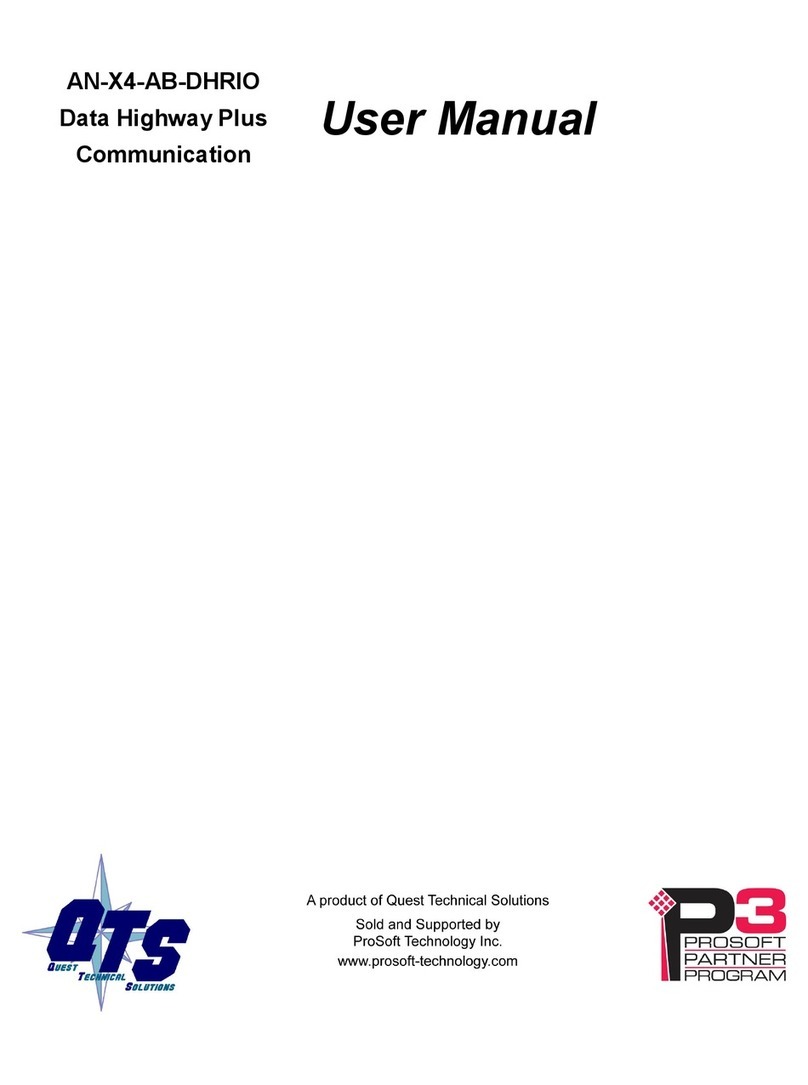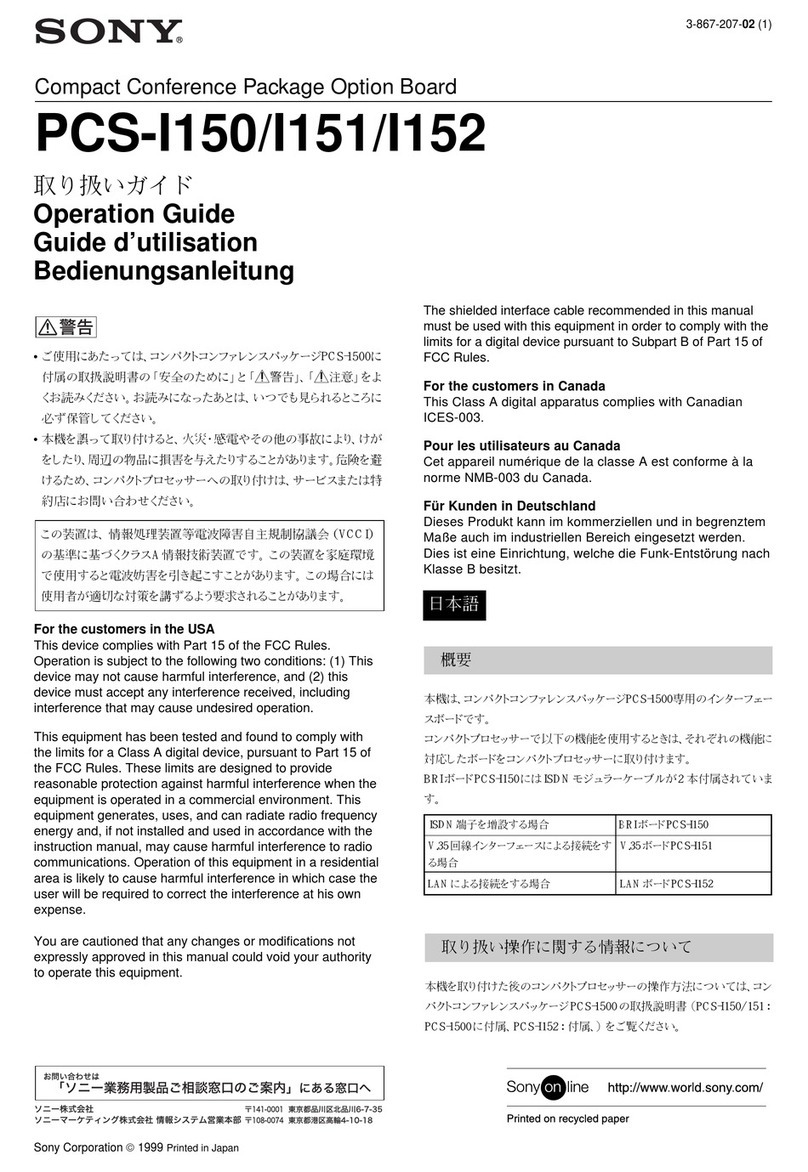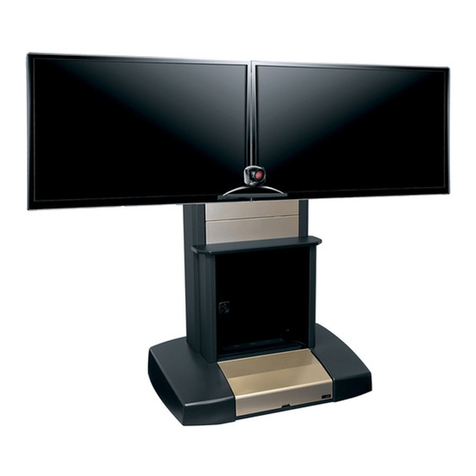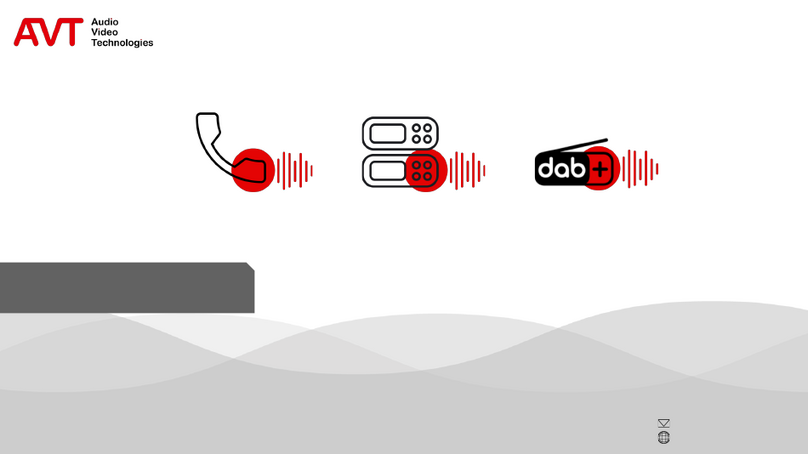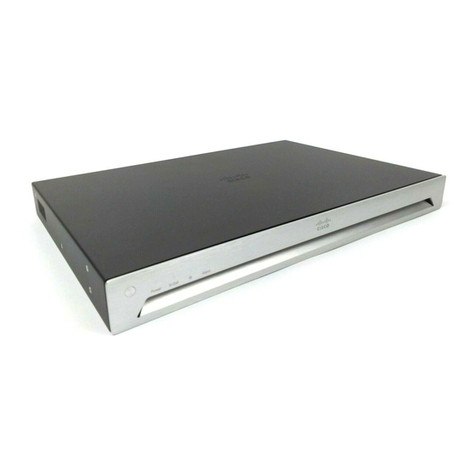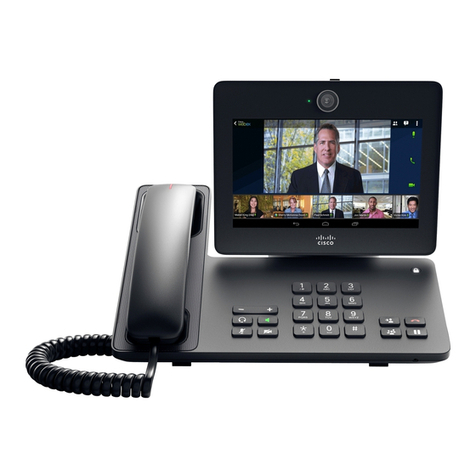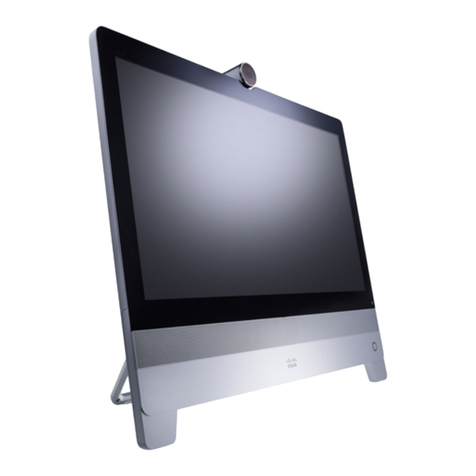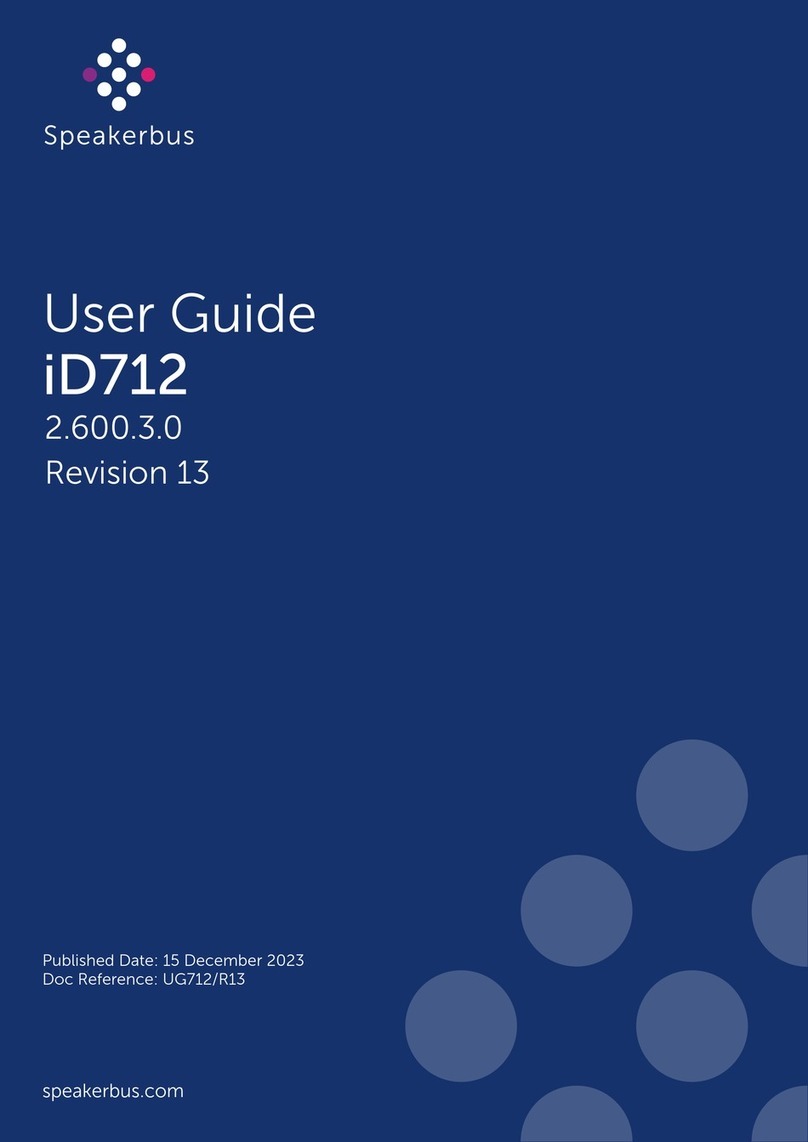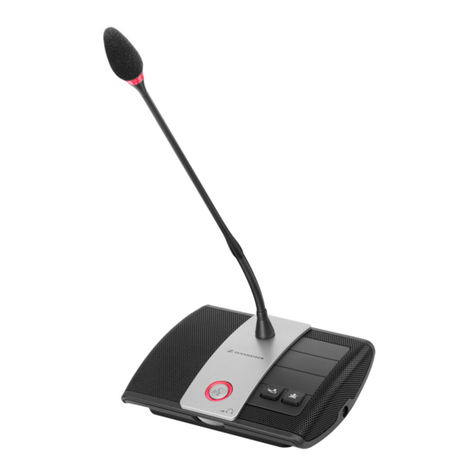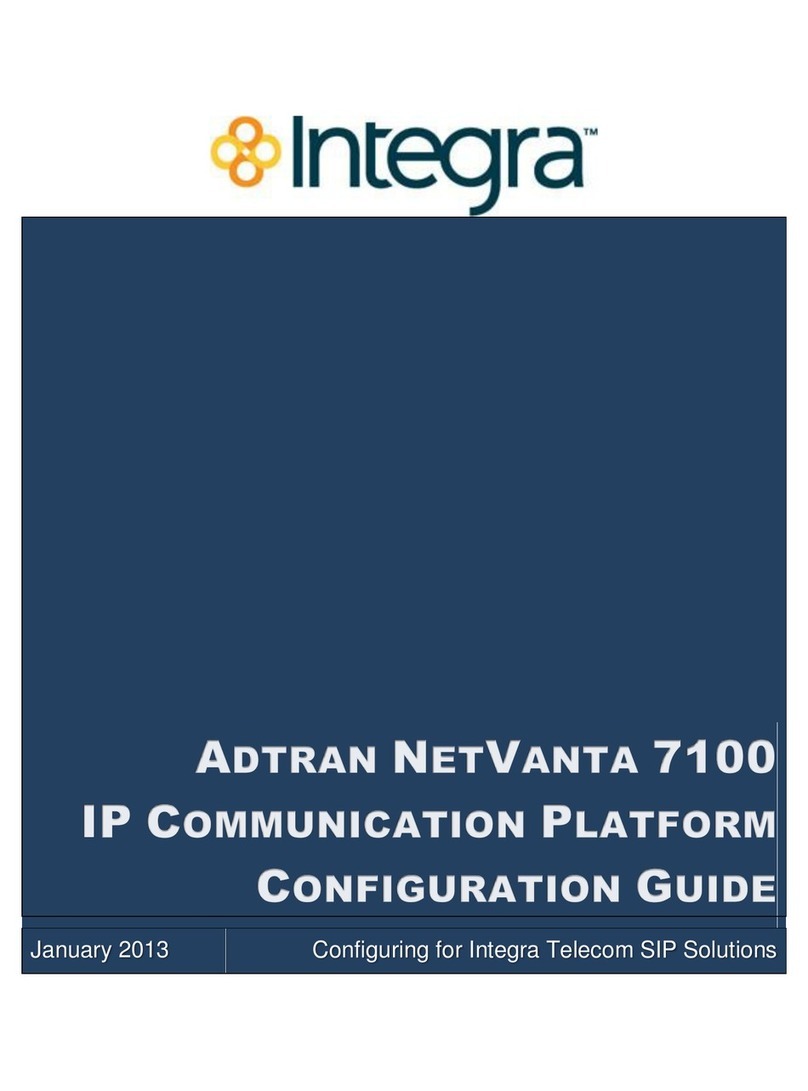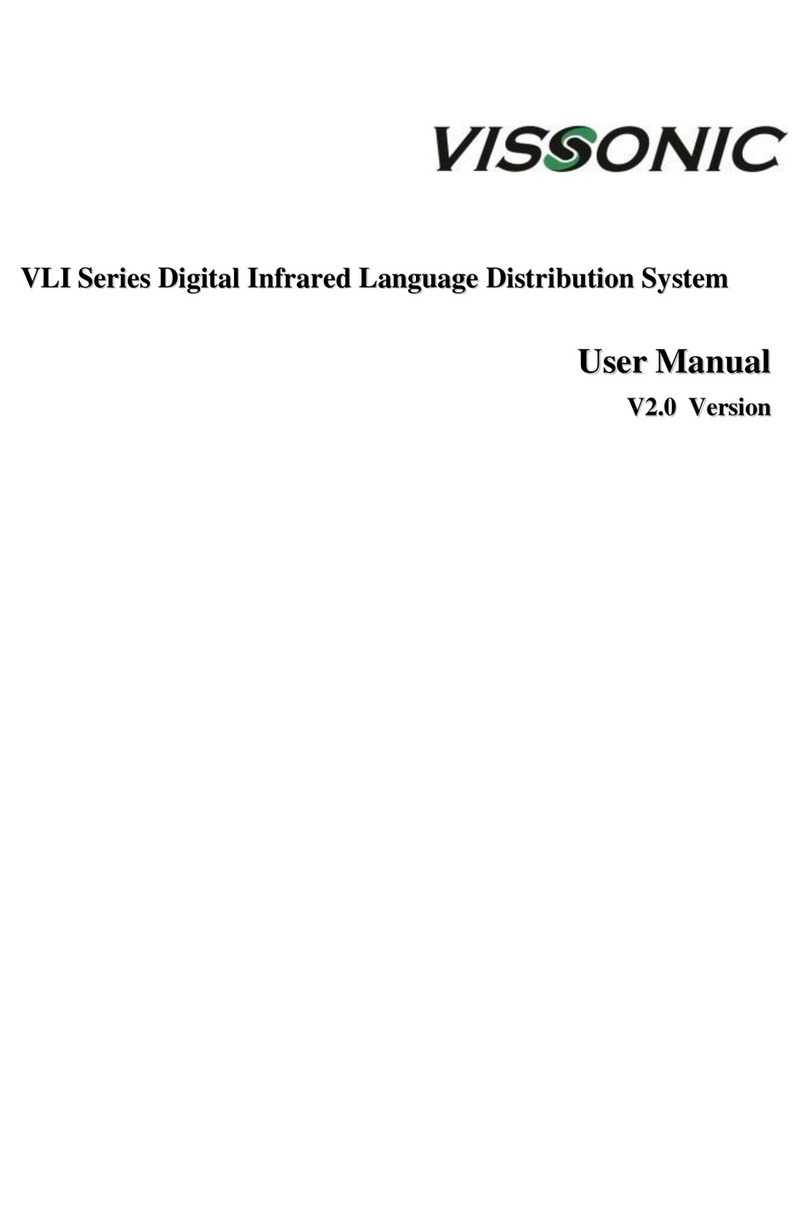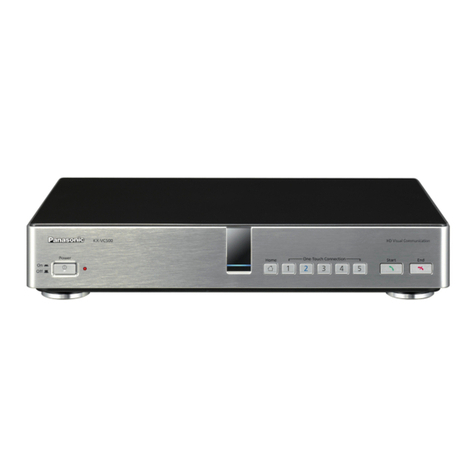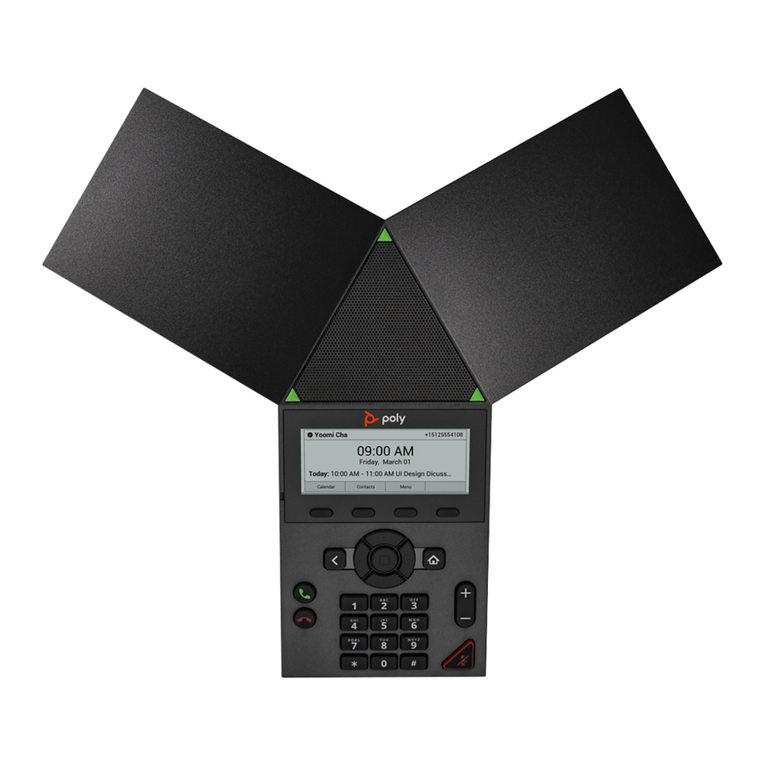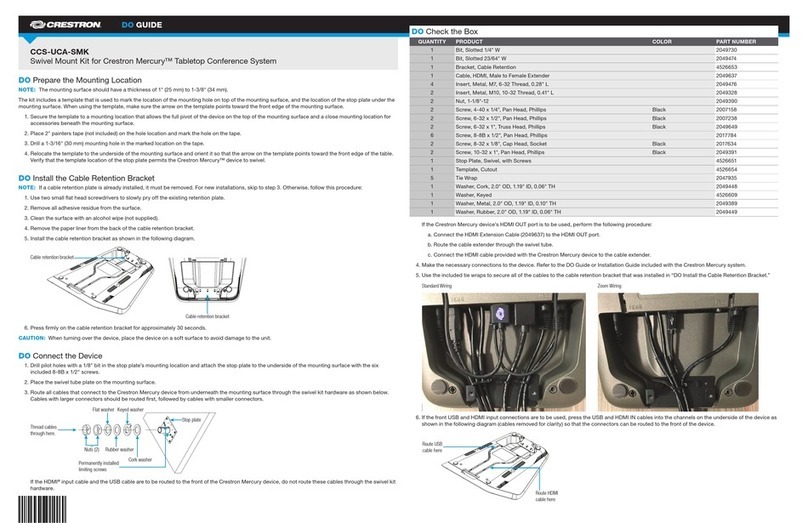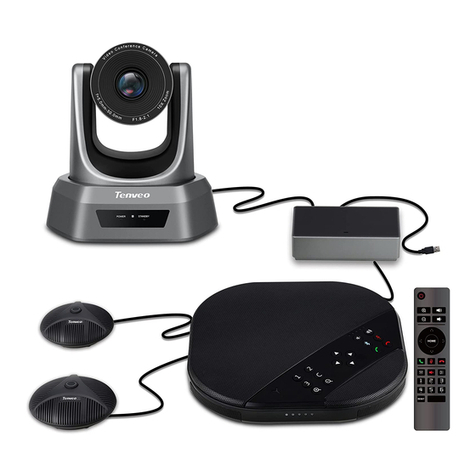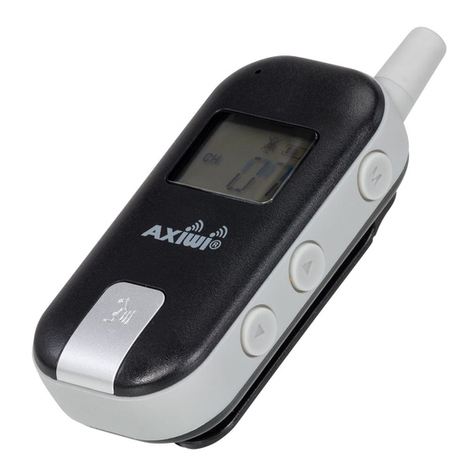
D15358.01 APRIL 2016
Collaboration Endpoint software
version 8.1
© 2016 Cisco Systems, Inc.
All rights reserved.
2
Table of contents
Introduction .....................................................................................................4
Definition of terms.........................................................................................4
In-room controls ...........................................................................................5
Create a user interface for the Touch 10 .........................................................7
Launch the in-room control editor.................................................................8
Create the in-room control panel ..................................................................9
API for programming in-room controls ..........................................................14
Connect to the video system ......................................................................14
Communicate over the API .........................................................................15
Widgets.........................................................................................................20
The widget identifier ...................................................................................20
Toggle button ..............................................................................................21
Slider ..........................................................................................................22
Spinner .......................................................................................................23
Button with custom text ..............................................................................24
Button with symbol .....................................................................................25
Group button...............................................................................................26
Text box ......................................................................................................27
Command reference .....................................................................................29
Events ........................................................................................................ 30
Commands .................................................................................................32
Statuses..................................................................................................... 33
Troubleshooting............................................................................................ 35
Development tools on the web interface.................................................... 35
Tips and tricks .............................................................................................. 38
Examples.......................................................................................................41
How to use this guide
The left menu bar and the entries in the table of contents are all
hyperlinks. You can click on them to go to the topic.
Product documentation
User guides and compliance and safety information
for Cisco TelePresence systems are available at
http://www.cisco.com/go/telepresence/docs
We recommend that you visit the Cisco web site regularly for
updated versions of this guide.
